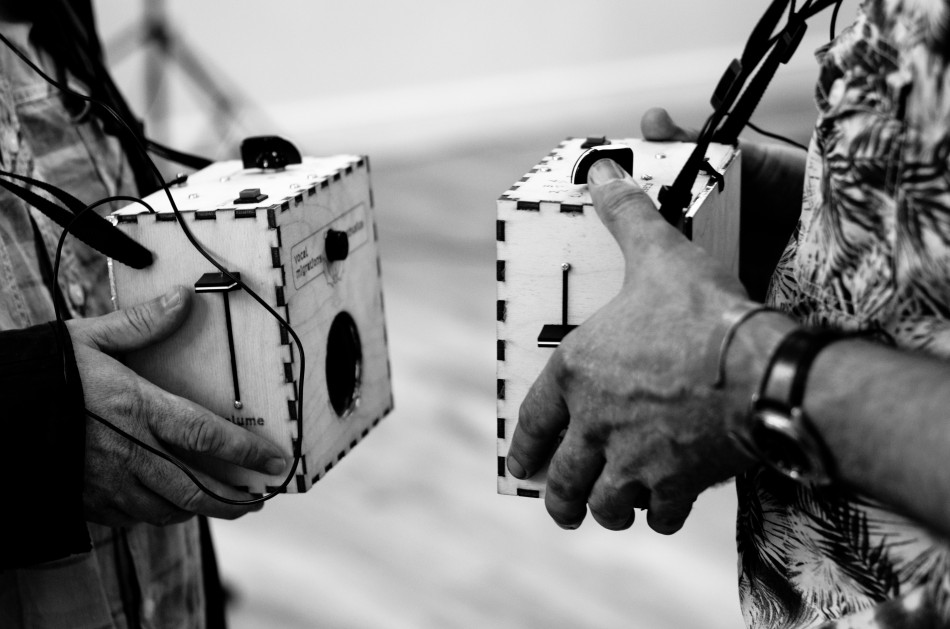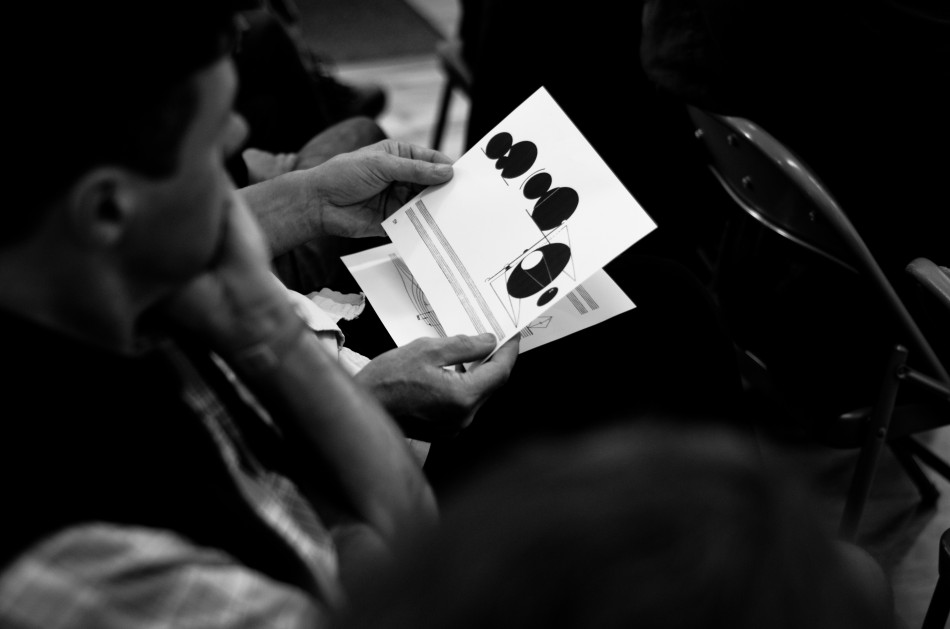
If Wet 5 occurred on Sunday with presentation/performances by Nikki Pugh (who I’ve known for years) and Kathy Hinde (who I hadn’t met before). I was taking photos again (it’s one of the few times I get to be a “trad” event photographer at the moment so I make the most of it) but, as ever, it was a big brain-jolt and notes were taken.
The main concept I had was for the harmonic optical theremin. Building on my camera-obscura-pinscreen-sculpture idea I wanted to think about a camera that produces sound. Usually this is done with a photoresistor which informs the pitch of a soundwave, often called an optical theremin. That’s not really a camera though, as a camera doesn’t just measure light - it creates an image from the light. So, what if, inside the camera obscura, each photoresistor in the array (each pixel, if you like) triggered a different soundwave with the pitches for each shade of grey being in harmony. Images captured by the camera would produce different chords. A live video feed, or movie, would play a tune. A prototype of this shouldn’t be too hard to do using Processing or similar.
Another idea, possibly tying in with the “performance photography” musing, is a camera that “explodes” with light, sound, movement, etc when the shutter is opened. This would be technically similar to the above but the reactive object would be the camera itself. The camera “reads” the subject and reacts accordingly. I see it having party streamers.

There was talk of “scores” on Sunday, particularly the odd graphic ones that experimental composers use, and I found myself wondering what a score for cameras might look like. Would it be very prescriptive (“walk 20 paces, look NNE at 45 degrees from horizontal and take photo with wide aperture and +2 exposure compensation”) or more vague? Could this be a way of making the photographic treasure hunt less cliched and tedious?
This notion of scores for photographers took me to the idea of group producing photos as a unit, each with own camera but the resulting images are combined into a “piece”, like the sounds of an orchestra or band. What was interesting about this was that the photographers would have to work together and follow a “beat”. The might have to be a conductor. If the score takes us through time the photos can be played back using timestamps.
Other thoughts:
GPS plays a big part in Nikki’s work. Many cameras, particularly those on phones, have GPS built in. Could the GPS inform the workings on the camera in some way? Probably easiest to do this as a smartphone app.
Feedback loops are used in music to create drones. What would a feedback look for a photo look like? A double exposure? Something like this?
Sadly I won’t be at If Wet next month as Fiona has insisted I go with her to a hot place for a week for a “holiday”. Le Sigh.

